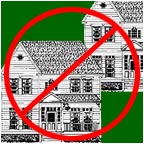


Protect the Partrick Wetlands
and our Community
![]()
|
Commentary in the Norwalk Hour
|

|
The approval agencies will naturally consider traffic when they examine these proposals, but with two towns and two separate proposals, chances are that each proposal will be considered in isolation of the other. But even if the agencies managed to work together and come up with what they deem a reasonable solution, traffic along Partrick will probably increase beyond what the local analyses show. Here's why.
The Pepperidge Farm property is on Westport Avenue, a few miles from Partrick. There is a proposal to build residential units on this large piece of land, which of course will further increase traffic on Westport Avenue, especially on weekends. The approval agencies will closely examine what is proposed for the property, and devise what they again consider a reasonable solution.
But what is acceptable according to local zoning and traffic regulations may not be acceptable for many local residents who decide to bypass Westport Avenue altogether and drive from Norwalk to Westport, or visa versa, using Partrick and Wilton Road, which already has too many cars. Traffic has already increased along a number of Norwalk streets (Murray, Dry Hill, Wolfpit, Cranbury) because of congestion on Westport Ave. Residential development on the Pepperidge Farm property will probably make Partrick a good shortcut for folks traveling into downtown Westport and beyond.
This is a tricky issue. I am not opposed to residential development on Westport Avenue, and sincerely hope much of it is affordable. But we need to step back and take a hard look at the overall development of Norwalk. Residents are deeply concerned with both the volume and speed of traffic. Solutions to speeding - enforcement, humps, reconfiguring lines, signs, lights, a state point system, etc. - are obvious but sometimes expensive to implement. Getting a handle on volume is extremely complicated.
Our back roads, many of which are used as shortcuts, already have unnaturally high traffic volumes that detract from the character of numerous communities. The city's Master Plan of Development, when updated, should delineate specific goals for specific areas. We need to adopt Smart Growth principles, such as focusing development in our urban core and limiting growth in the more peripheral areas. Development proposals could then be considered in a framework that takes the entire city into consideration.
One the one hand, the number one topic at community meetings is the volume and speed of traffic. But on the other, City officials are devising ways to increase commercial development, parking and affordable housing. There is an obvious disconnect here. We need to solve the traffic problem; we need to solve the parking problem; we need affordable housing. But without an updated Master Plan it might be impossible to achieve these goals in a balanced manner.
Bruce Kimmel
Norwalk Common Council